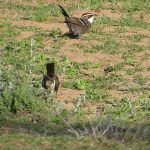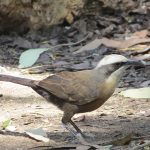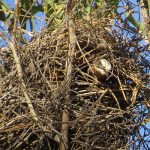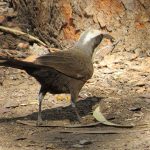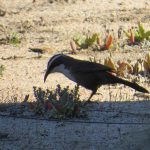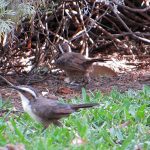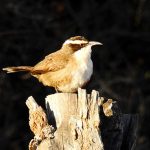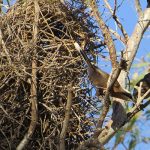AUSTRALIAN BABBLERS
Babbler birds are known for their social and gregarious behavior, often foraging in groups or flocks, and they have a variety of feeding techniques, including ground-foraging and gleaning insects from foliage. They belong to the family Timaliidae, and their diet primarily consists of insects and other small invertebrates.
These birds are highly active and vocal, often communicating with each other through a series of distinctive calls and vocalizations while foraging for insects.
In addition to their insectivorous diet, some babbler species may also consume fruits, seeds, and other plant matter as part of their omnivorous feeding habits. Nonetheless, insect-eating remains a significant part of their diet, and they play an essential role in controlling insect populations in their respective habitats.
The Chestnut-crowned Babbler (Pomatostomus ruficeps) is endemic to arid and semi-arid areas of south-eastern Australia. It is a distinct species of babbler found in specific regions of the country.
The Chestnut-crowned Babbler has a striking appearance with a chestnut-colored crown and nape, contrasting with its black face, white throat, and brownish body with white streaks. It is known for its social behavior and is often seen foraging in family groups or flocks, searching for insects, spiders, and small invertebrates.
Being an arid and semi-arid specialist, the Chestnut-crowned Babbler is adapted to thrive in dry and harsh environments, and it plays an important role in its ecosystem by contributing to insect control, seed dispersal, and as a food source for predators.
The Grey-crowned Babbler (Pomatostomus temporalis) is the largest of Australia’s four babbler species.
The Grey-crowned Babbler is known for its grey crown and nape, black face, and brownish body with white streaks. It has a distinctive appearance, and as with other babbler species, it is also a social bird that forages in family groups or flocks.
These birds are typically found in a range of habitats, including woodlands, grasslands, and shrublands, across eastern and south-eastern parts of Australia.
Their diet consists of insects, spiders, and other small invertebrates, and they play an important role in controlling insect populations in their respective ecosystems.
The White-browed Babbler (Pomatostomus superciliosus) is endemic to areas of central and southern Australia.
It has a distinct white eyebrow, black and white streaked plumage, and a long tail. It is a social bird that lives in family groups or small flocks and is known for its cooperative breeding behavior. Members of the group work together to build nests, raise young, and defend their territory.
These babblers are typically found in a variety of habitats, including woodlands, open forests, and scrublands, across central and southern parts of Australia. They feed on insects, spiders, and other small invertebrates, often foraging on the ground and in low vegetation.

